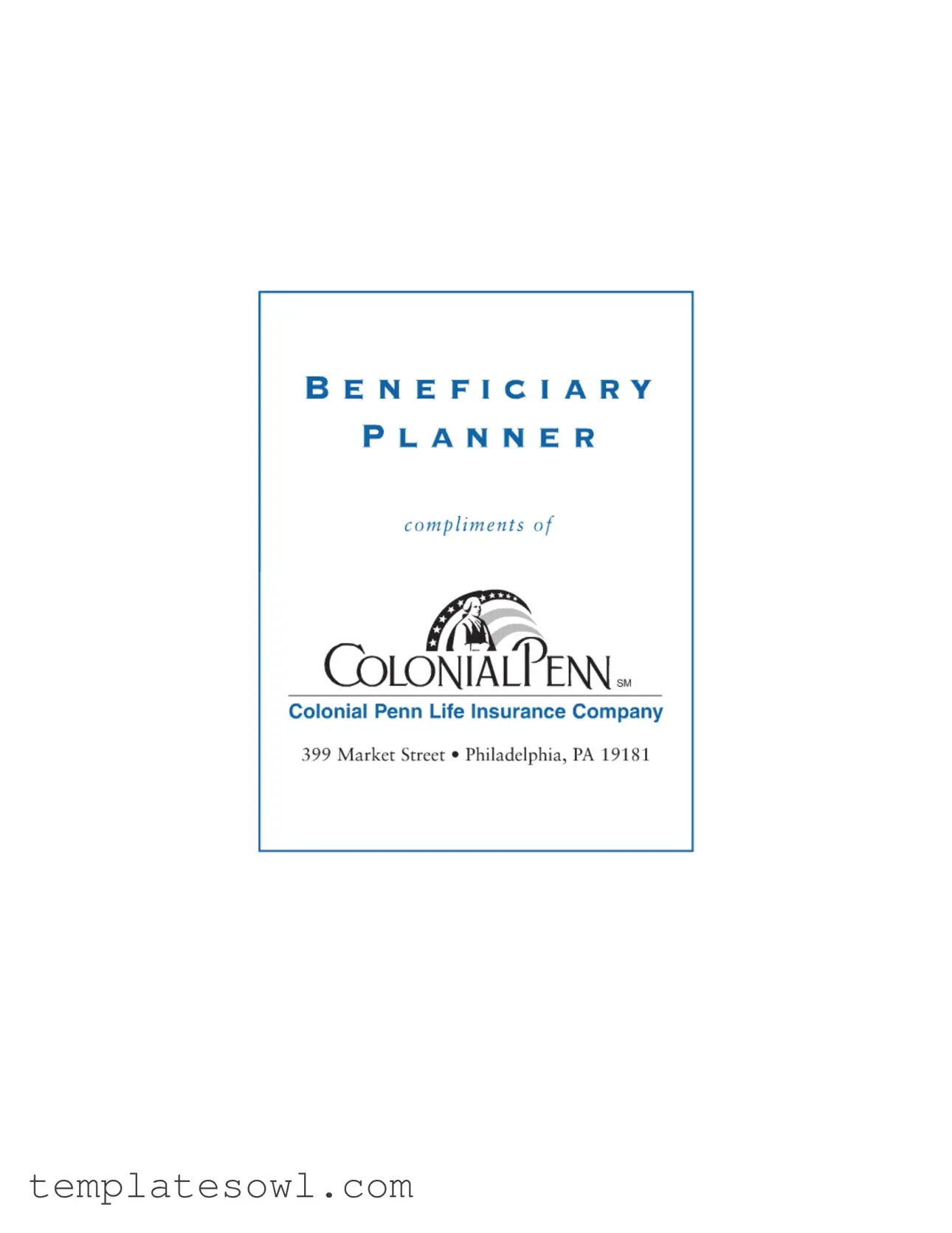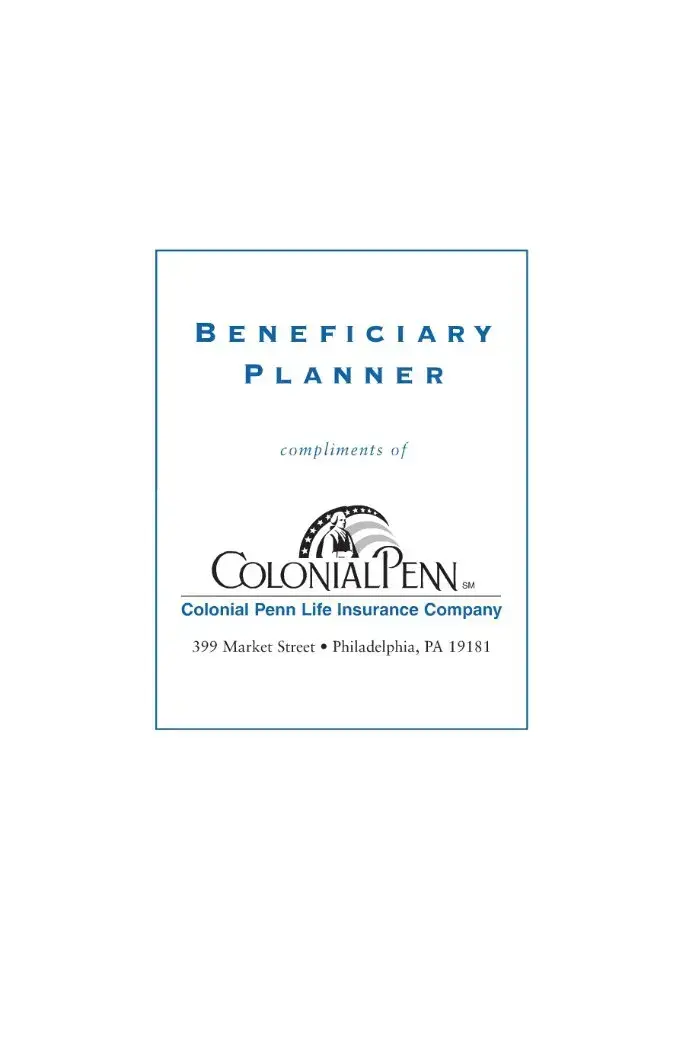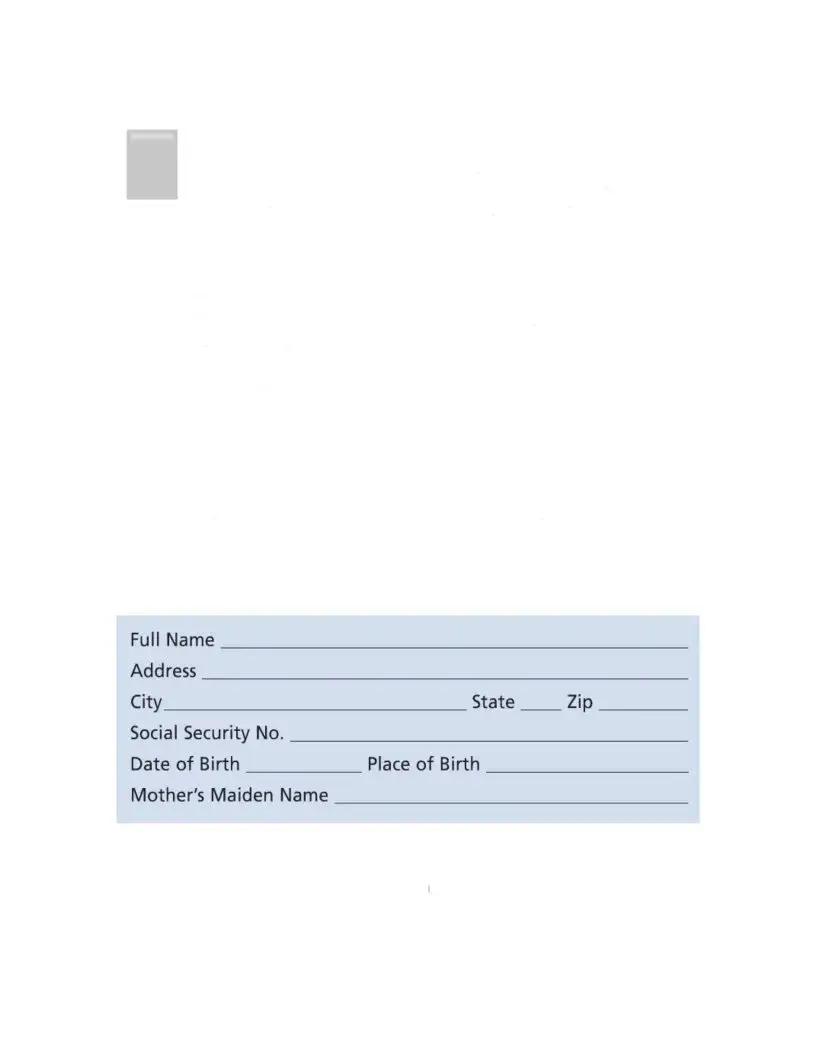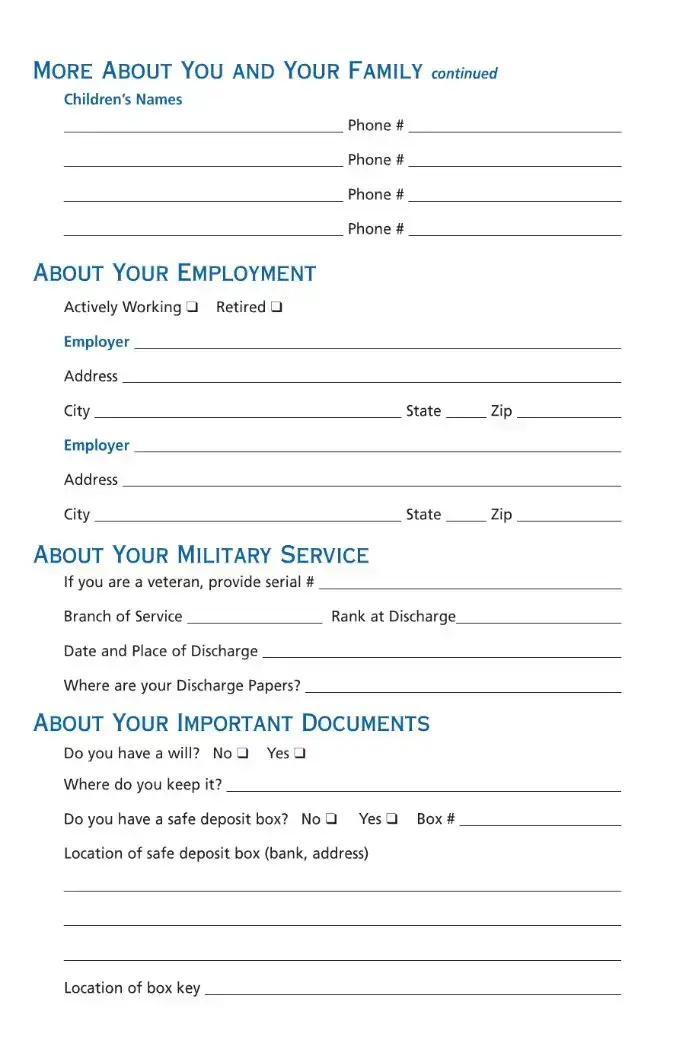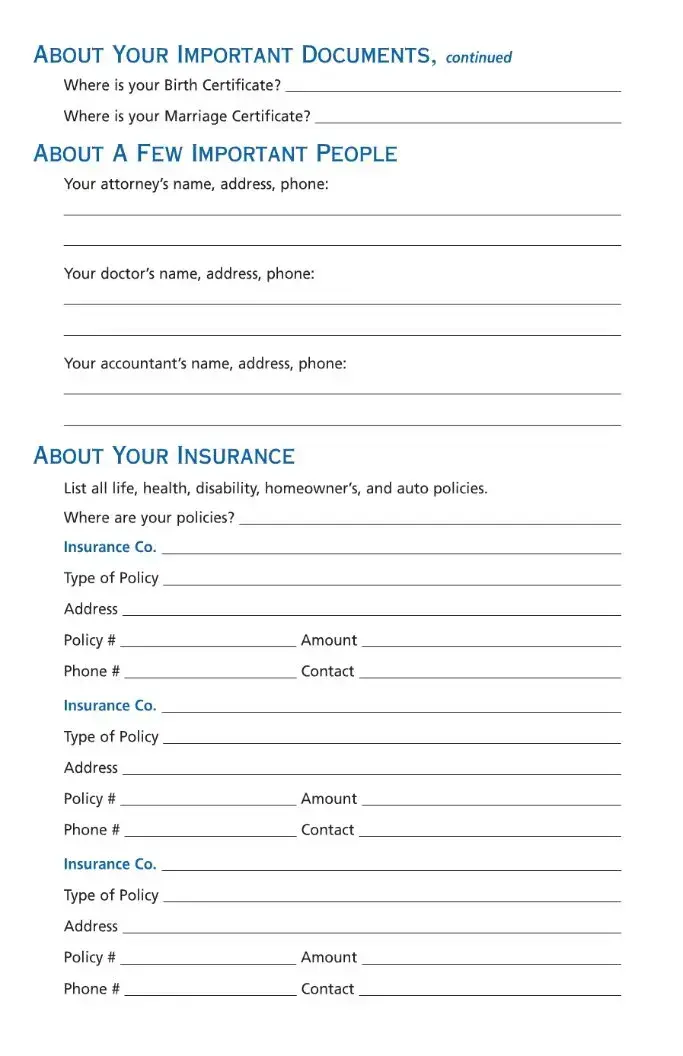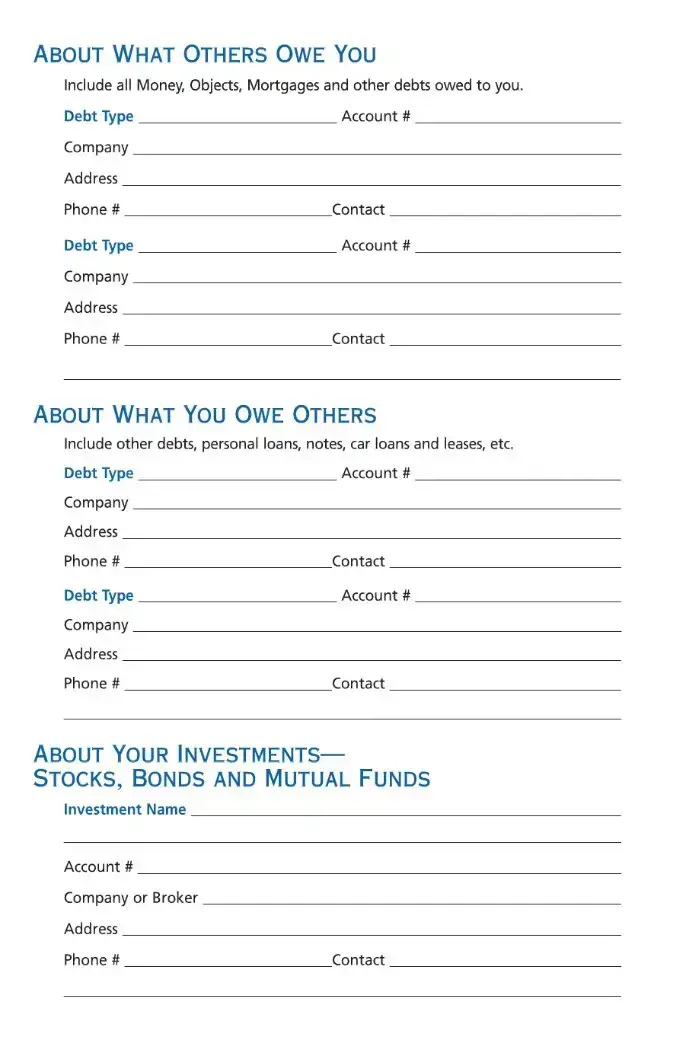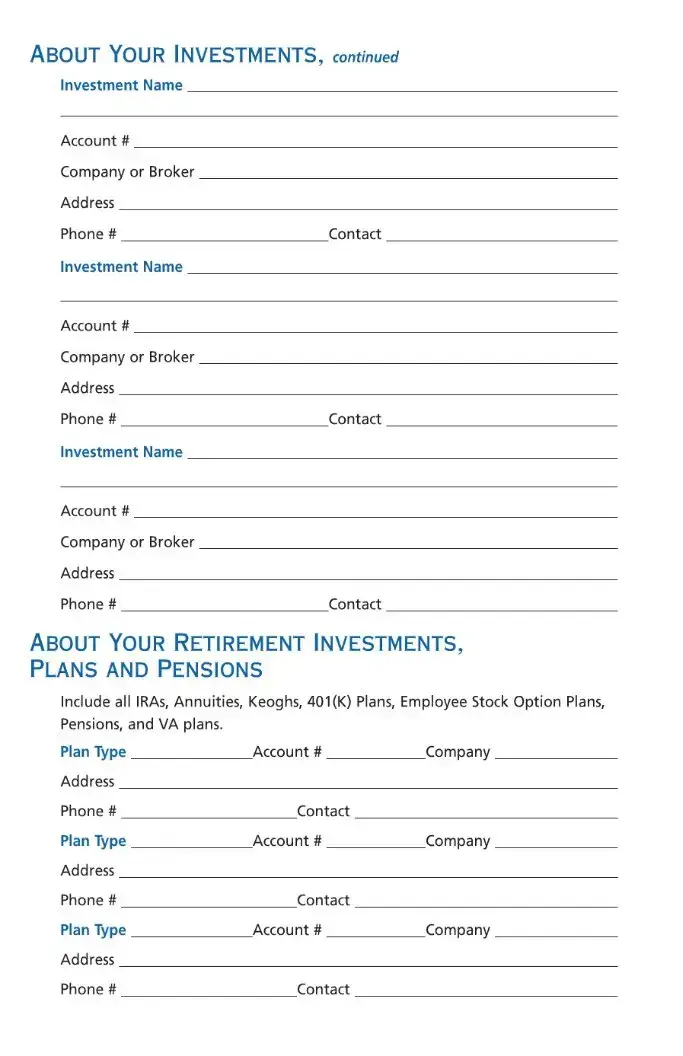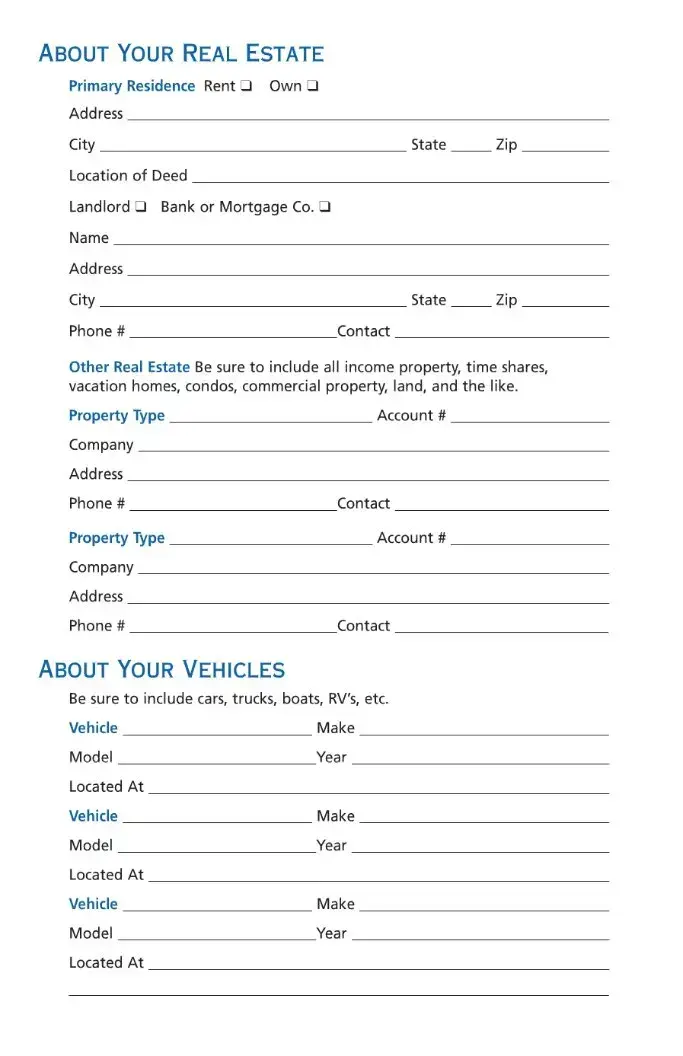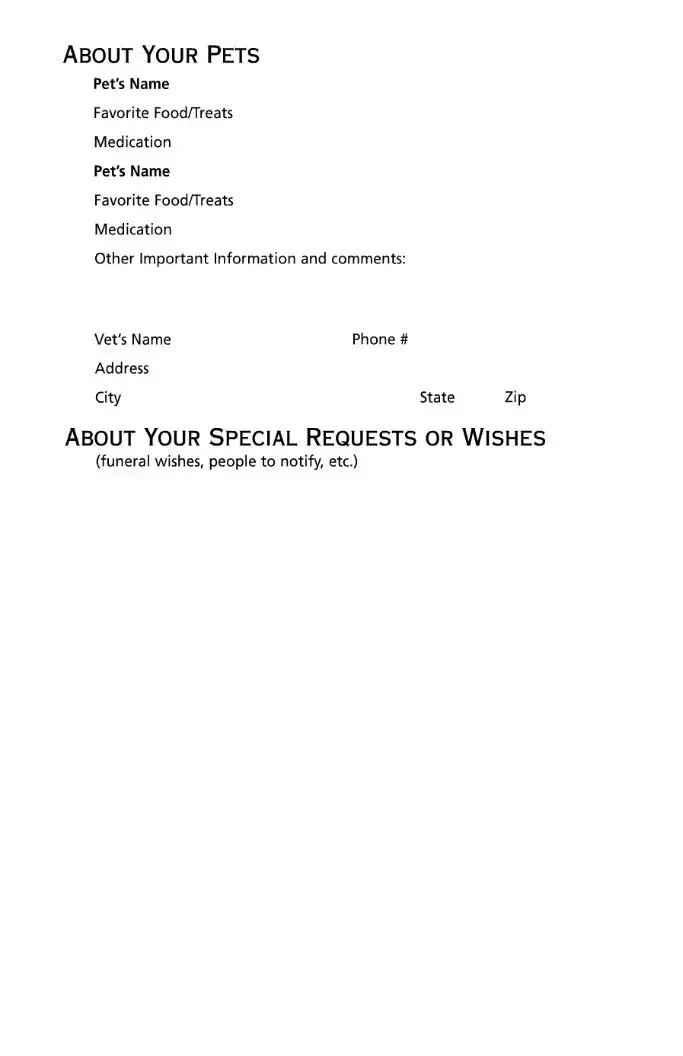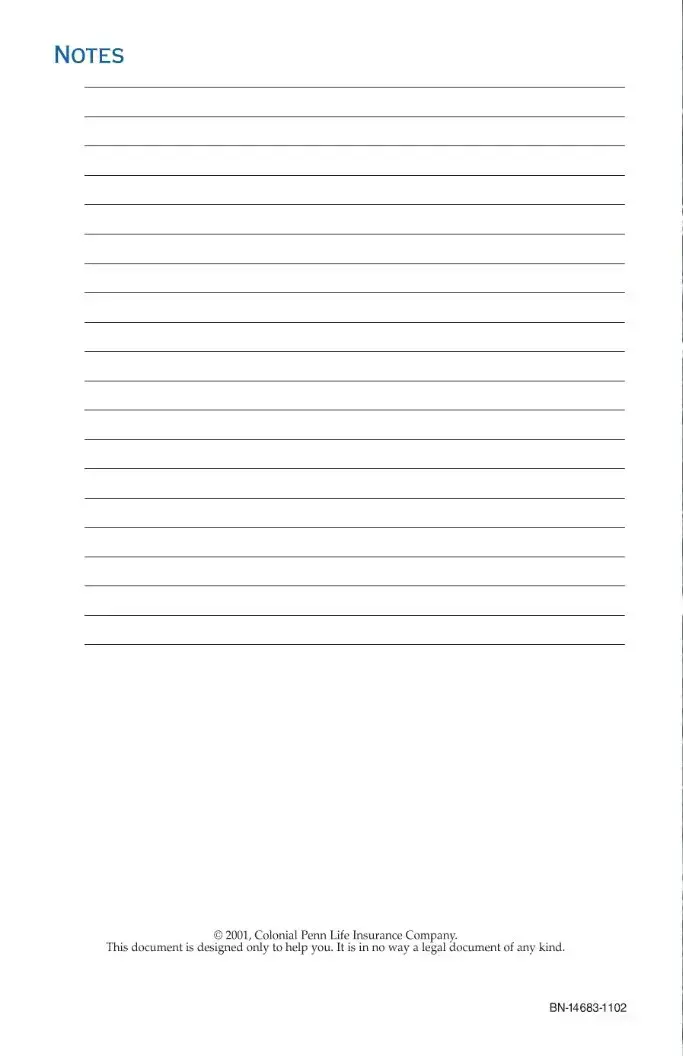What is the Beneficiary Planner form?
The Beneficiary Planner form is a specially designed guide provided by Colonial Penn Life Insurance Company to assist policyholders in outlining their wishes and important information regarding their affairs. It serves as a tool to help individuals communicate their preferences and the location of important documents to their loved ones.
How does the Beneficiary Planner assist me?
This planner helps you organize vital information that your family or friends will need after you pass away. You can document where important papers are kept, what responsibilities need to be taken care of, what bills should be paid, and how to handle various accounts. By providing this information, you relieve your loved ones of the burden of searching for details during a difficult time.
Who should fill out the Beneficiary Planner?
Any policyholder who wishes to leave clear instructions for their family and friends should fill out the Beneficiary Planner. Whether you are single, married, a widow, a widower, or divorced, completing this guide ensures the people you care about have all necessary information when the time comes.
What kind of information can I include in the planner?
You can include a wide range of information in the Beneficiary Planner. This might cover where your important documents are stored, what specific needs must be addressed after your passing, and a list of bills that need payment or accounts that should be canceled. Additionally, there may be space to include personal messages or wishes you would like your loved ones to know.
Can I add extra information beyond what is provided in the form?
Yes, if you find that the space provided is insufficient for all of your information, you can attach additional sheets of paper. This ensures that you can provide as much detail as needed for your family to have a comprehensive understanding of your wishes.
What should I do after completing the Beneficiary Planner?
Once you have filled out the Beneficiary Planner, it is advisable to review the information with a trusted family member or friend. They should know where you keep the completed form and should be aware of your wishes. Storing the planner in a safe place is crucial, so don’t forget to share that location with your chosen person.
How often should I review the Beneficiary Planner?
It’s important to review the Beneficiary Planner periodically. Life circumstances change, and keeping the information current will ensure that it remains a helpful resource for your loved ones. Updates might be needed after significant life events such as marriage, divorce, or the birth of children.
Why is it important to prepare this information?
Preparing this information serves multiple purposes. It helps you become organized, eases the stress on your loved ones, and provides clear directions regarding your affairs. This thoughtful planning can also extend to ensuring that your pets are cared for, should that be a concern.
What is the best way to keep the Beneficiary Planner secure?
Storing the Beneficiary Planner in a safe place is essential. This could be a locked drawer or safe where important documents are kept. Just ensure that the individual you trust knows how to access that location. Providing clear instructions makes it easier for them to find the planner when they need it.
